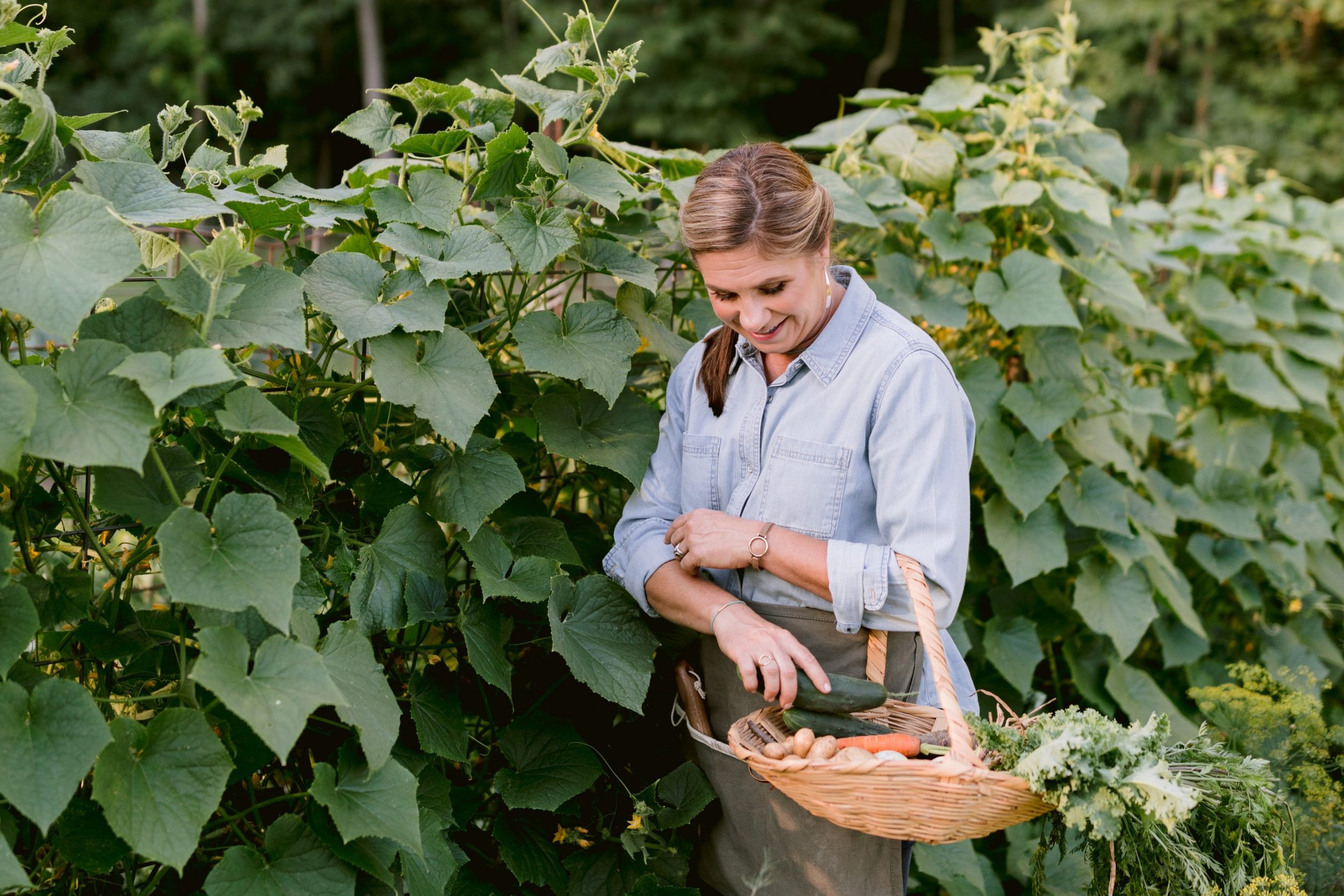How to Harvest from Your Kitchen Garden
Have you ever found yourself questioning exactly how to harvest the produce in your kitchen garden? If you’ve put in all the work to grow fresh veggies and fruits for your family, I want you to be able to enjoy it! Learn how to harvest from your kitchen garden like a pro and make your garden-to-table lifestyle that much better.
Leafy Greens: Harvest leaves from the outside of the plant — there’s no need to harvest a whole head unless you need it. Harvesting only what you need actually promotes more growth. When harvesting salad greens, have a bucket of cold water handy t submerge your greens immediately after harvesting. Then spin to dry and refrigerate until you are ready to eat.
Zucchini/Summer Squash: Prime harvest size is 6-8 inches, but I know we all have let a zucchini or two get away from us and grow into a giant in the garden! When they get super big, I like to use them up in zucchini bread and muffin recipes. When you harvest them smaller, the squash will have less seeds and the best taste. Do not store in plastic or in containers after harvesting.
Garlic: When 1/3 of the plant is brown, the garlic is ready to harvest. Start by digging out one bulb to check before harvesting the whole crop. Garlic growers know you have to cut out the scape to produce a good bulb — check out my video on exactly how to do this task.
Cucumber: Confirm the variety of your cucumbers and then research the maturation time for that specific variety. Once your cucumbers start turning yellow, they get bitter. Harvesting them on time ensures a crunchy, fresh taste without a trace of bitterness.
Potatoes: When the above-part of the plant dies out and the tops turn brown, it’s time to start digging up your potatoes!
Peppers: Peppers are usually easy for gardeners to harvest because we have all seen what different pepper varieties look like in the grocery store. Once your peppers are full size, go ahead and pick them! You can pick them sooner if you want them smaller, but if you want them to be sweeter, leave them on the plant until they turn yellow/orange/red. If you need extra reassurance, you can always research the variety to double-check days until harvest.
Tomatoes: Tomatoes will easily pull off the vine when they are ready to harvest, but even if you harvest early they can continue to ripen a bit on your countertop. I like to pick my tomatoes right before I am going to eat them for the best taste and most nutrient density. However, certain types of heirlooms have tender skin and are likely to split if left on the vine for too long, so if you are unable to keep a close eye on them, I would definitely harvest them a bit early to avoid cracking and spoiling.
Green beans: Green beans are best to pick when the bean pods are young, tender, and full but not swollen. They should be dark green with no fading.
Get ready to experience the true joy of bringing freshly picked, organic produce from your garden straight to your table. Each harvest is a chance for you to hone your skills and learn from your garden. Soon, you’ll know when to harvest without even thinking about it – it’ll be second nature!

